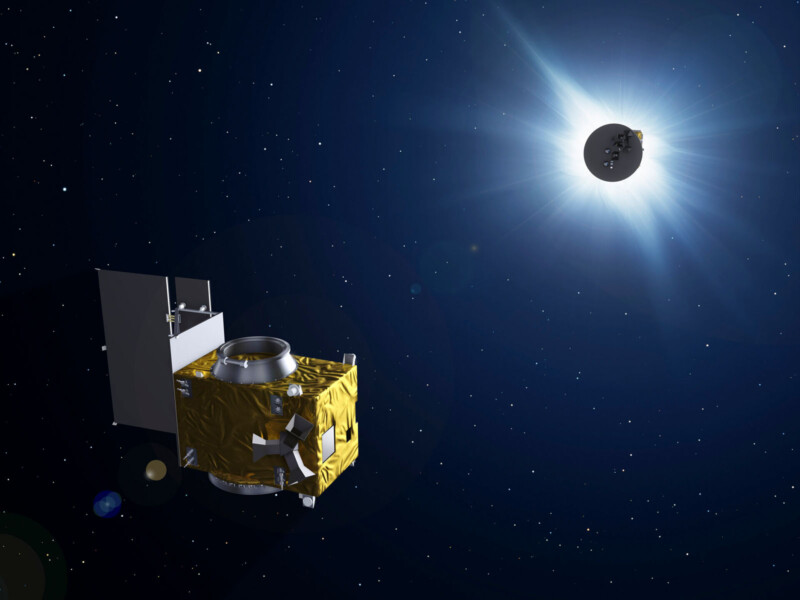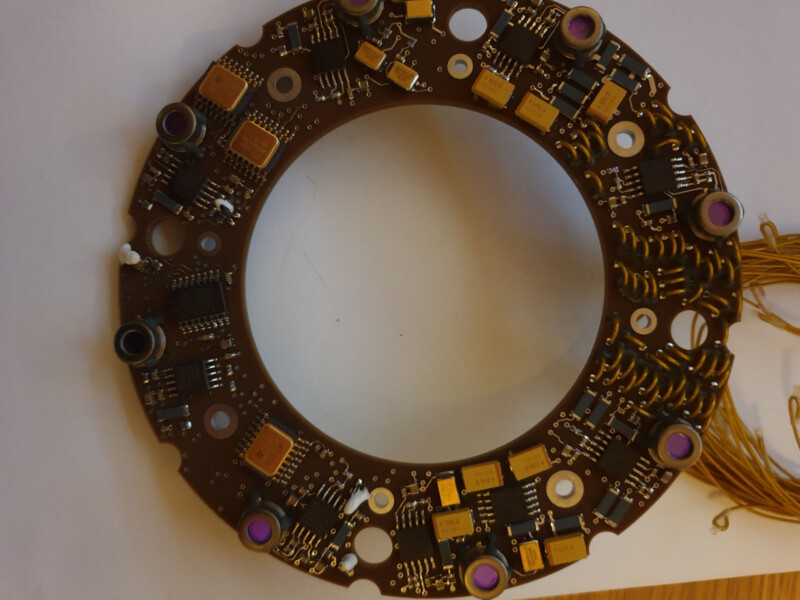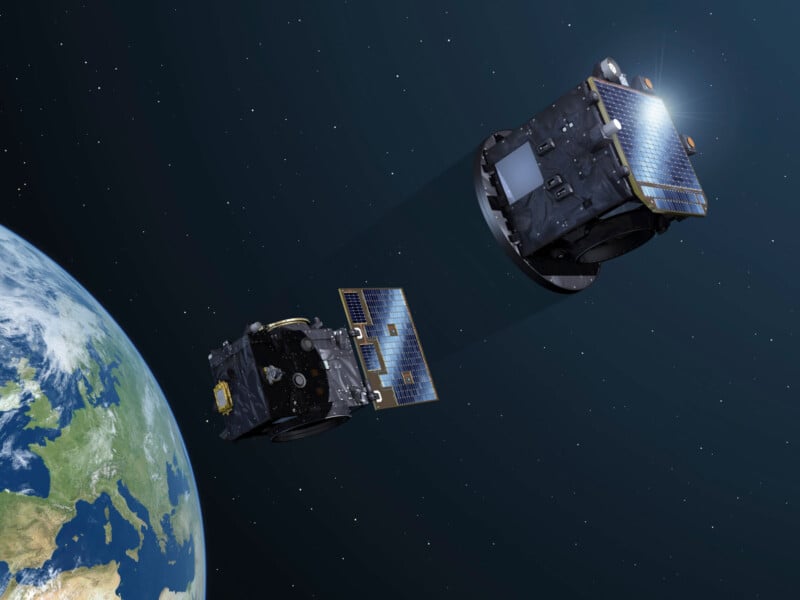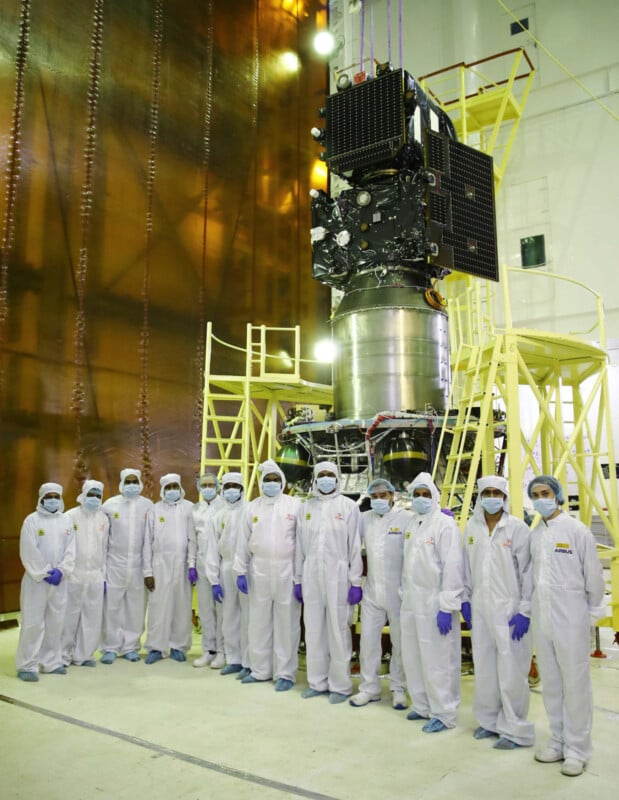![]()
After a slight hiccup and one-day delay, the European Space Agency’s incredible Proba-3 mission successfully launched into space. The Proba-3 mission will do something never seen before: it will precisely and repeatedly create solar eclipses in orbit using two satellites. Lining up these satellites is a remarkable technological feat and relies heavily on breakthrough imaging technology.
Before diving into how the Proba-3 mission will work, it is essential to understand the mission’s objective. The mission, the first of its kind, relies upon two satellites. One is the “Coronograph,” and the other the “Occulter.” The idea is to use these two spacecraft to create a six-hour-long solar eclipse in space, enabling the spacecraft to capture images of the Sun’s corona.

During the 2024 Total Solar Eclipse, NASA and other scientific institutions spent considerable effort to develop and execute projects to study the Sun’s corona. The corona, which surrounds the Sun, is much hotter than the star, and the coronal activity plays a significant role in space weather. Scientists also believe that the Sun’s corona impacts the weather on Earth. However, studying has long been challenging because it is nearly impossible to view parts of the corona outside of the infrequent solar eclipse conditions.
![]()
Proba-3 aims to make these rarities much less rare. While a natural solar eclipse may offer just a few minutes of totality and scientists must contend with unpredictable weather and Earth’s atmosphere to view it, a space-based eclipse created by Proba-3’s dual spacecraft can last up to six hours and is readily repeatable. The sheer amount of data that Proba-3 will make possible is unprecedented.
As for how the Proba-3’s spacecraft will work, it is an astounding operation. The two satellites, the Coronagraph and Occulter, weigh 314 and 231 kilograms, respectively (692 and 509 pounds). They are reasonably big and heavy. It is one thing to get satellites like this into orbit; it is another entirely to have them work together and with the required precision.
That is where American semiconductor company Onsemi comes in. PetaPixel chatted with Steven Buckley, the lead engineer on the Proba-3 project at Onsemi.

“About seven years ago when we were given this project to work on with ESA, I was the one holding the short straw while everyone ran off,” Buckley says, alluding to the immense challenge he and his team faced for the Proba-3 mission. “So it’s really just been myself and a couple of guys. My responsibility has been designing the shadow positioning sensors (SPS).” Buckley was originally at an Irish startup, SensL, which was later acquired by Onsemi in 2018.
These shadow positioning sensors are a vital part of the Proba-3 mission. At a very high level, the shadow position sensor, which has eight sensors (two sets of four, one for redundancy), precisely measures the light that strikes the sensor and provides the data required to line up the Coronograph and Occulter spacecraft. The sunlight that hits the SPS is converted into voltage, and the amount of voltage tells the spacecraft how much light is striking the photovoltaic sensors.
![]()
Through Onsemi’s sensors, the two spacecraft can be lined up within an accuracy threshold of around 1.5 millimeters (0.06 inches) across every dimension while staying 150 meters (492 feet) apart in co-orbit. The two spacecraft can create a stable eclipse for hours with constant micro-adjustments. When they are not making an eclipse, the spacecraft float freely, out of synchronization.
Buckley explains that there are three phases to each alignment. The first is optical and provides a rough alignment of the Occulter and Coronograph spacecraft. The second uses lasers, which dials things in further. But the SPS comes in to get a nearly perfect alignment for the required precision to make the Proba-3 mission scientifically valuable.
“As you can imagine, this is a challenge because these two [spacecraft] are traveling at 22,000 miles per hour,” Buckley explains.

Buckley says the four sensors have “extremely accurate, low-noise” performance. They can detect extremely low levels of change. The measured changes are converted into digital information — after all, light is analog, which is why digital cameras have an analog-to-digital converter — and then fed into the spacecraft.
Specially-developed algorithms convert these voltage changes into information that enables the spacecraft to align and create the perfect eclipse. The crafts will move different amounts in varying directions based on how the voltage shifts. One way to think about it is that the SPS communicates the information the spacecraft needs to create the solar eclipse in orbit, and the language the SPS speaks is shadows. The location and intensity of the shadow is the required data.

Buckley and his team spent years on the SPS and completed their essential work about eight months ago. Since then, they have been doing the finishing touches and working alongside ESA to make sure everything came together on the spacecraft before it was launched into space.
“My hands are clean,” Buckley says, acknowledging he is still a bit nervous. “ESA has done all their testing and say it’s going to work… and I really want it to work.” He is confident it will work, but like all engineers and scientists, he knows certainty is impossible until the spacecraft are fully operational in space. Until Proba-3 creates its first eclipse in space, nobody can completely relax.
As of earlier today, Proba-3 is officially in orbit, and everything looks good. The team expects its first scientific results, following extensive testing in space, to arrive in about four months. Proba-3 is expected to last for two years, during which time the team will create 50 eclipses in orbit annually. The six hours of study time during each Proba-3 eclipse dwarves the natural eclipse study opportunities in an average year, which amounts to 10 to 15 minutes annually if all goes well. Proba-3 has the potential to transform humanity’s understanding of the Sun and how it impacts life on Earth, thanks in massive part to Onsemi’s image sensors, years in the making.
Image credits: European Space Agency and Onsemi
